An Innovative Guide to Teaching Primary Maths
- Titanium Tutors

- May 29, 2023
- 4 min read
Updated: Jun 19, 2023
How do you plan a top-notch Maths lesson for a 5-year-old or a 7-year-old or even a 10-year-old? There are more similarities than first meets the eye!
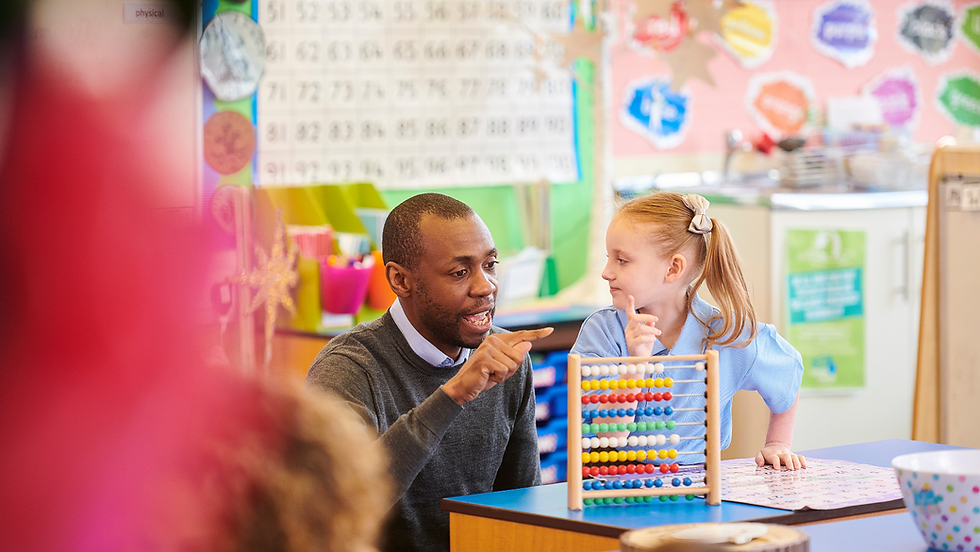
The most important consideration is to plan the lesson with the learner’s needs and current level in mind. For example, if the learner is struggling with identifying fractions, it seems a big leap to expect them to successfully find equivalent fractions and decimals.
When a reasonable and clear objective for the lesson has been determined, incorporating different ways of explaining the chosen concept helps to consolidate learning. After all, presenting a Maths problem using multiple perspectives could result in that ‘lightbulb moment’ for some struggling students, or an opportunity to master their skills for more able students!
This line of thought also underpins the ‘CPA’ (Concrete, Pictorial, Abstract) methodology.
Concrete, Pictorial, Abstract
According to the Primary Maths CPA method, children consolidate mathematical ideas using concrete, pictorial then abstract resources. For example, introducing a younger learner to add, could start as simply as stacking blocks, before drawing objects, then tackling number sentences (i.e. 2+1).
The idea behind this is that physical and visual aids act as building blocks in a child’s understanding of abstract topics. It’s not a quick method by any means - after all, you would need to dissect a concept physically (sometimes in more ways than one), visually and abstractly (and not always in that order)!
However, it is a method which is meant to help foster a deeper mastery of concepts, help students discover links and patterns, and help them feel more secure in their understanding.
Hands-On Maths Resources for Tutoring Primary Maths
When teaching Primary Maths, getting your hands on concrete objects doesn’t mean spending a fortune! Lolly sticks that serve as number counters, a bamboo pole cleverly transformed into a counting stick… there are many possibilities to incorporate and even create with the children.
Here are some ideas to consider when you apply a hands-on approach to your next lesson:
Use a muffin tin or egg boxes as arrays to aid in multiplication
Cut and colour paper plates to consolidate fractions
Use Lego as place value counters or to use for addition and subtraction
Use Dominoes pieces to create and solve number sentences
Use Hula Hoops to make Venn Diagrams!
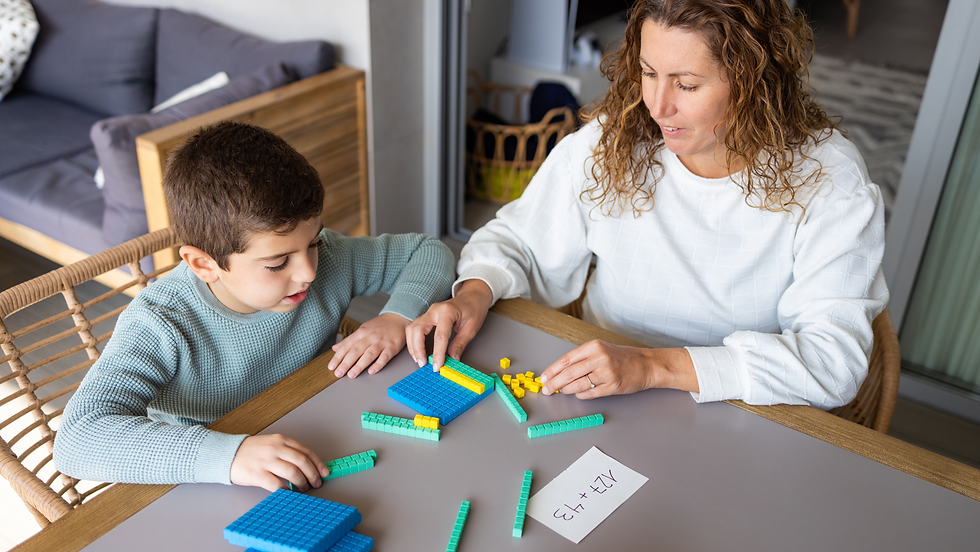
Exploring the Online World
There are a plethora of benefits to teaching online. Particularly since the COVID-19 pandemic, many tutors have transitioned to the online world; it’s more flexible, accessible - not to mention cost-effective! - and there are also a range of online resources out there which can enhance any student’s learning experience.
If you’re teaching online, although concrete resources would be hard to share virtually, there exist many excellent pictorial resources and games (many of which are free to boot!):
Thinking About Maths: Another Lens
Besides the resources you use, exposing children to different mathematical scenarios across a variety of subject areas can also serve to consolidate knowledge and act as a cross-curricular link.
Why not combine a mini-D.T lesson designing different paper airplanes with a Maths lesson where you test and measure the distance travelled of each model? Or perhaps a PSHE lesson which examines the viability of different household budgets set against the backdrop of a Maths lesson adding up expenses?
Introducing Maths into everyday situations and other subject areas gives Maths a greater sense of relevance and removes it from a solely classroom or pen-to-paper setting. Engaging and inspiring young Maths learners is key to developing their interest and success in later life!
How Does This Translate to Exam Preparation?
Certainly, practising Primary Maths papers is one of the most crucial elements to exam preparation, but following a CPA and multi-discipline approach consistently leading up to examinations could greatly benefit each learner. After all, exam questions don’t necessarily ‘teach’ anything, but do serve to highlight what gaps may need consolidating.
The more new mathematical situations a learner is exposed to, the more adept they would be at tackling them in an exam setting.
Let’s examine this recent question from a SATs Paper 3 Reasoning Paper:
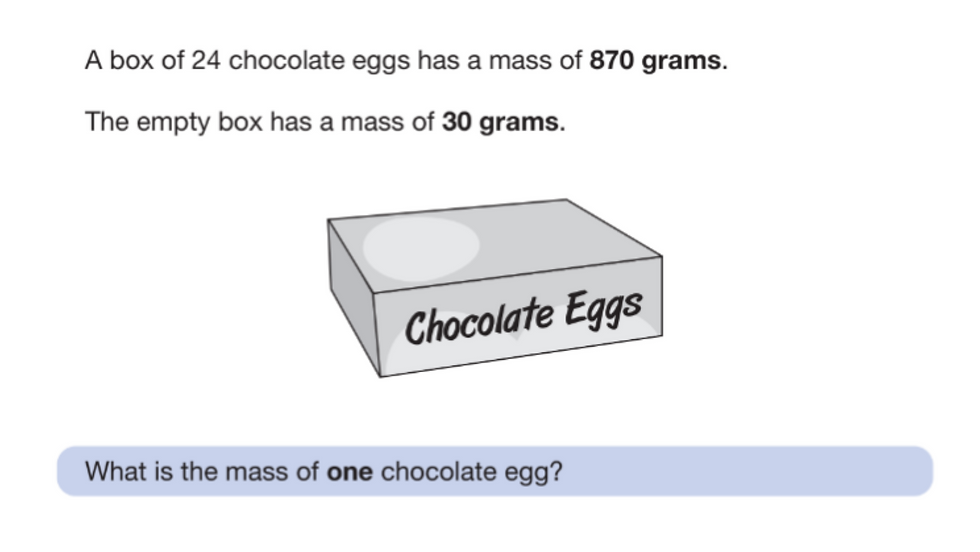
The task can be prepared as a hands-on approach in advance using a scale, an empty box and a series of identical household objects (chocolate eggs as the problem dictates, apples, etc). If the learner is still new to these sorts of questions, the numbers can be scaled to lessen the difficulty (ie. from 24 eggs to 10 eggs; from 870 grams to 150 grams; etc).
Pictorially, the learner can draw a diagram to solve (combined with a ‘halving’ technique as some may struggle to divide the number by 24 all in one go!):
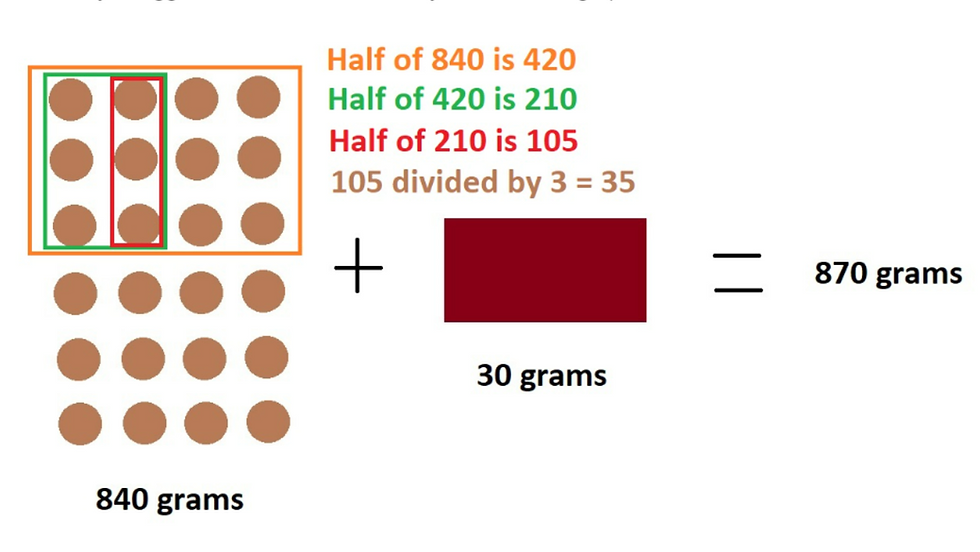
Another pictorial representation can also be a bar model, also known as the part-part-whole approach:
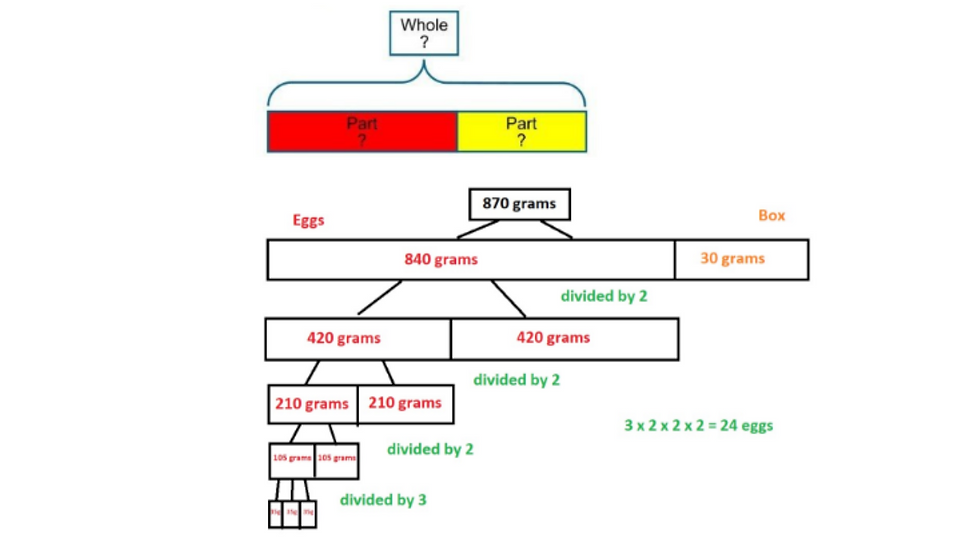
The methods listed above are by no means exhaustive, and the learner may reach the answer (35 grams per egg) in different ways. The goal is to develop these skills so that with practice, fluency is achieved and abstract methods become second nature.
Have you introduced your students to any of these techniques in your Maths lessons?
At Titanium Tutors, your lessons are how you determine them to be. Rather than follow a strict guideline on what to include in each lesson, we believe our tutors are experts in their subjects and give them the freedom to plan for their individual students!
We love sharing ideas and invite any tutor to get in touch with us to learn more.

Blog Post Crafted by Cheryl
Cheryl manages our Admin Team, and is a qualified teacher with 5 years' experience in schools across England and Canada.
Cheryl graduated from McMaster University with an Honours Bachelor of Commerce and a Minor in English, and from University of Toronto with a Bachelor of Education, with a specialisation in Aboriginal Studies. She tutored secondary school students in English for over nine years in Canada.
Cheryl speaks Cantonese, English and French, and in her spare time, she can be found illustrating and reading children’s books for inspiration.








Comments